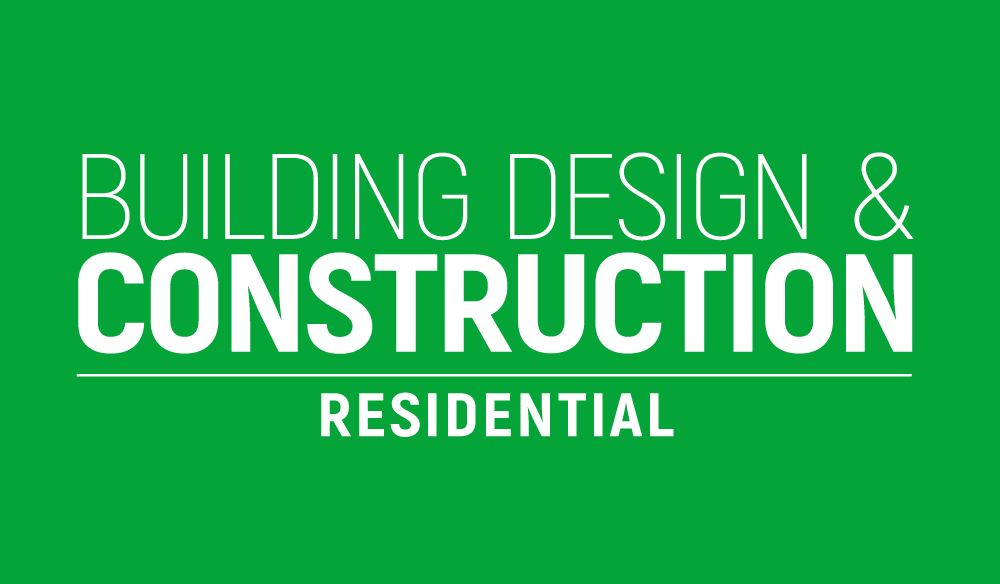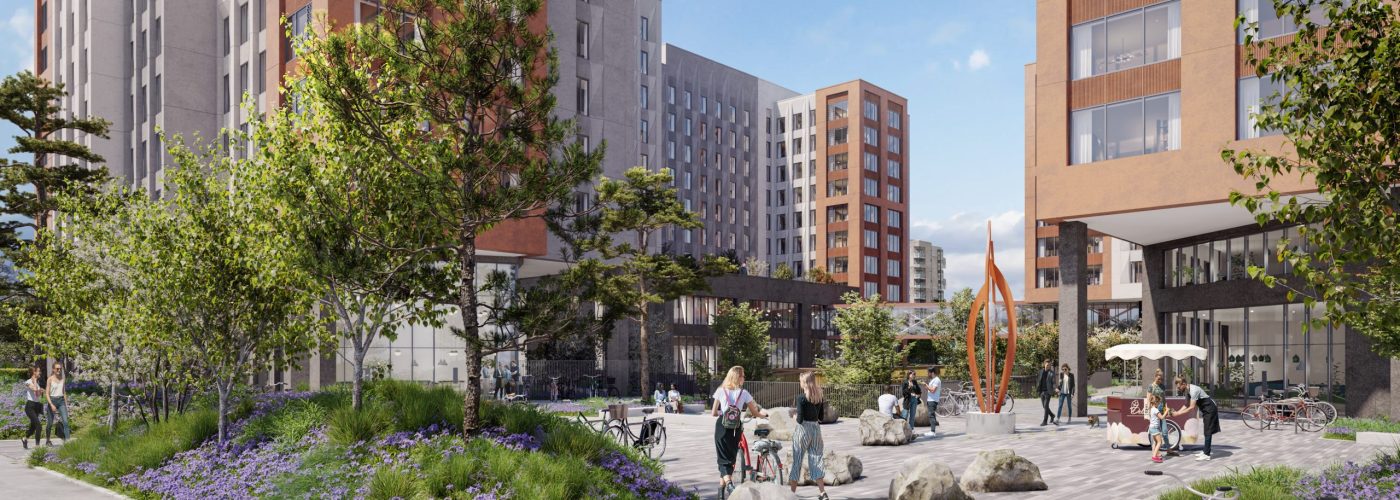An Bord Pleanála has granted planning for a major student accommodation scheme on the Naas Road, Dublin 12, which will bring much needed student housing to the city.
Designed by London based, leading International Architecture and Urban Design practice, HKR Architects for Hollybrook Homes, the Gowan House development will provide 899 purpose-built student rooms (including 44 accessible units and 24 studios) across buildings varying in height from thirteen storeys to ten storeys. The masterplan includes shared community and cultural space, retail space and an attractive public realm positioned on the River Camac.
An Bord Pleanála overturned a previous refusal by Dublin City Council at Gowan House on the grounds that student residential was not an appropriate use on the site and the mass of the proposal was inappropriately large.
Joao Ornelas, Associate Director for HKR Architects comments: “We welcome An Bord Pleanála’s decision to overturn a previous ruling by the Dublin City Council for this development, which brings 900 student beds to the city. The decision addresses the considerable pressure to supply student housing and creates a great opportunity for future regeneration within the City Edge masterplan.
“Our extensive PSBA experience together with our client’s long knowledge of the student sector has empowered the team to create a very viable and efficient scheme, achieving optimum site value in line with HKR’s well established ‘Value by Design’ ethos. This is something we pride ourselves on and bring to all our projects.
“This development is unique as it is one of the first to address the daylighting a culverted River in this case the Camac within the City Edge Strategic Framework. Opening a river running nine metres below ground level is challenging but will bring several benefits to the site and ultimately add value.
“This is a complex initiative required expert input from the dedicated specialist team. The creation of a low intervention Riparian Zone will encourage biodiversity, increasing plant diversity, food resources and higher quality shelter to the benefit of wildlife inhabiting and commuting through the area. It also proves the overall flood resilience along the River Camac.”
Several innovative design measures were adopted to meet the project brief as well as address DCC’s policy aspirations. River daylighting was maximised, which in turn optimises the ecological benefit while providing a wonderful visual amenity to all the spaces overlooking the river.
The scheme includes extensive roof gardens as external amenities. This move in the landscape strategy allows the quantum of public realm to be increased, offering an interesting experience for the public with a treetop walk ‘floating’ over the river, providing an attractive visual and ecological feature to this new urban quarter. A pedestrian bridge connects the residential blocks, enabling the communal amenities to be shared between all blocks. This design has the operational benefit of a single entrance point from which residents are distributed across the dissected site.
The façade composition utilises complementary and contrasting colours to modulate the general mass of the scheme adding variety and interest to the overall composition. Pre-cast concrete components are proposed in the façade design, providing a high-quality finish with a considered of colour textures and patterns. This robust low maintenance material ensures the continued appearance of the façade through a full life cycle. The use of prefabricated elements brings all the benefits of offsite construction to the project and aligns with HKR’s decades long expertise in industrialised Construction.
Internally the standard rooms are arranged in clusters, each featuring three to eight bed spaces with shared living, kitchen and dining areas. HKR have maximised the number of dual aspect clusters, creating 67% dual aspect sitewide avoiding single aspect north-facing clusters.
5% of the rooms are accessible and located near circulation cores for ease of access. Excellent provision is made for disabled users in all circulation spaces and communal areas. All landscaping, public and private has been designed to be fully accessible and inclusive.
Prioritizing sustainable transportation, car parking provision is at an absolute minimum of nine spaces, including accessible parking. The development will improve the cycle network and offer extensive bicycle storage including cargo/adapted bike spaces and electric bike charging.
The development is accessed via a public south-facing plaza, leading to the central landscape, which includes the daylit segment of the river. The retail, cultural and community spaces, located on the western side of the site off Naas Road directly overlook the new square and public realm, activating and enhancing these spaces while providing new facilities for the surrounding neighbourhood.
Jerry Ryan, HKR Executive Chairman comments, “HKR Architects have a long tradition of challenging consensus and optimising mixed use urban regeneration. Smithfield Square constructed in 2003 represented a step change in the density of urban redevelopment in Dublin with a plot ratio of 5.5. Recently it was voted the second ‘coolest neighbourhood’ in the world by TimeOut, second only to Medellin in Columbia. “
Later HKR achieved a grant of permission at Ballsbridge One with a plot ratio of 4.6 which kickstarted the regeneration of Ballsbridge Central. This grant of permission on the Naas Road represents a landmark decision in the city’s ongoing redevelopment. It addresses a very real housing need. Dublin’s housing shortfall should be addressed via multiple residential typologies including student accommodation and co-living as is demonstrably the case in all European cities. The idea of one size fits all does not address the reality of the diverse demography that is a city.”
Building, Design & Construction Magazine | The Choice of Industry Professionals





